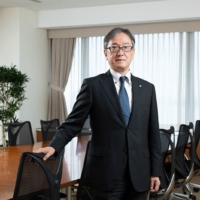The fate of the Japanese economy may still be up in the air, but one thing is certain: We are living in an age of reduced expectations. Regardless of what happens to the GDP and unemployment rates, the public does not believe that things can only get better.
Since World War II, the Japanese have believed that they comprise a uniform middle class, with all the entitlements a middle class should enjoy, including the idea that their children's lives would be more affluent. During the past decade, however, they've seen lifetime employment go out the window and the pension system undermined. As a result, class differences that were always there but easy to ignore have become more pronounced.
Takuro Morinaga, a researcher for UFJ bank and one of the pundits on TV Asahi's nightly news show, "News Station," discusses these changes in his best-selling book, "The Economics of Surviving the 3 Million yen Salary Era." He roughly divides people into those who earn tens of millions of yen a year, those who earn between 3 yen and 4 million yen, and those who earn 1 million yen or less.















With your current subscription plan you can comment on stories. However, before writing your first comment, please create a display name in the Profile section of your subscriber account page.